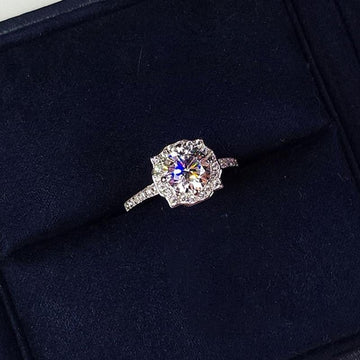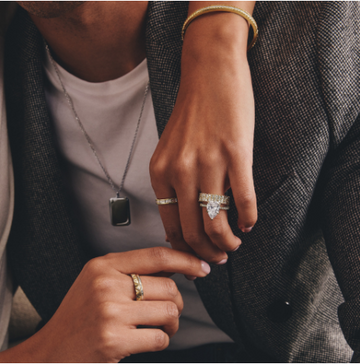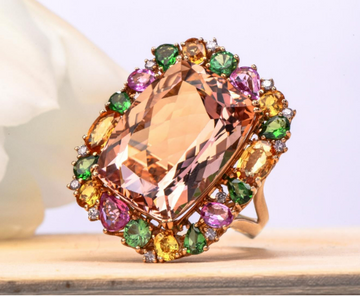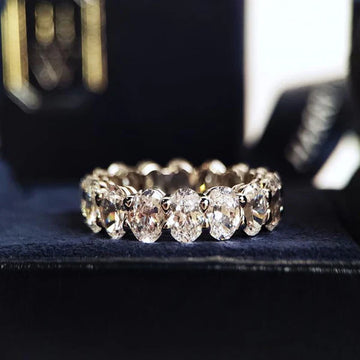Diamonds and other precious stones are some of the most sought-after and valuable items in the world. Their beauty, rarity, and symbolic meaning have made them highly prized for centuries. Whether you're buying an engagement ring, an heirloom piece of jewelry, or investing in precious gemstones, understanding the value of diamonds and other precious stones is crucial. This article will explore how diamonds and precious stones are valued, factors that affect their price, and why these gemstones are considered symbols of luxury, wealth, and lasting significance.
1. Introduction: The World of Precious Stones
Diamonds and precious stones have captivated humanity for thousands of years. They have been used as symbols of power, love, and status, and are integral to many cultures’ most important milestones. From engagement rings to royal crowns, these stones hold immense value in both monetary and sentimental terms.
However, understanding the value of diamonds and precious stones goes beyond just the price tag. It involves knowing what makes a gemstone valuable, how its rarity and quality are measured, and how these factors influence its overall worth.
2. The Four Cs of Diamond Value
When it comes to diamonds, their value is typically determined by the "Four Cs": Carat Weight, Cut, Color, and Clarity. These factors play a vital role in determining the price of a diamond and are essential for any buyer to understand.
A. Carat Weight
-
Definition: Carat weight refers to the size and weight of a diamond. One carat is equivalent to 200 milligrams.
-
Impact on Value: Larger diamonds are rarer and therefore more expensive. However, the carat weight alone doesn’t determine the diamond's overall value—it's the combination of all the Four Cs that matter. For example, a smaller diamond with exceptional clarity and cut can be more valuable than a larger diamond with lower quality.
-
Tip: When shopping for diamonds, consider that slight increases in carat weight (e.g., from 1.00 to 1.25 carats) can significantly raise the price.
B. Cut
-
Definition: The cut of a diamond refers to how well it has been shaped and faceted. A well-cut diamond reflects light in such a way that it appears bright and sparkly.
-
Impact on Value: The quality of the cut is often considered the most important factor in diamond valuation. A well-cut diamond will maximize the stone's brilliance, whereas a poor cut can make the diamond appear dull, even if it has perfect color and clarity.
-
Tip: Prioritize the cut when choosing a diamond, as it impacts both the beauty and the value of the stone. Cut is graded on a scale from Excellent to Poor.
C. Color
-
Definition: The color of a diamond refers to the presence of any color in a diamond, typically ranging from colorless to yellow or brown. The less color a diamond has, the more valuable it is considered.
-
Impact on Value: The Gemological Institute of America (GIA) grades diamond color on a scale from D (colorless) to Z (light yellow). Diamonds that are colorless or near colorless are rarer and command a higher price.
-
Tip: For an engagement ring, diamonds in the D-F range (colorless to near colorless) are often preferred, but they come with a higher price tag.
D. Clarity
-
Definition: Clarity refers to the presence of internal or external flaws (inclusions and blemishes) in a diamond. These imperfections can affect how light interacts with the diamond and influence its overall appearance.
-
Impact on Value: The fewer the inclusions or blemishes, the more valuable the diamond. Diamonds are graded from Flawless (FL) to Included (I), with Flawless diamonds being the rarest and most expensive.
-
Tip: Most diamonds have some inclusions that are microscopic and invisible to the naked eye. A diamond with minor inclusions may still be a great choice without significantly affecting the price.
3. The Role of Other Precious Stones
While diamonds are the most well-known precious stones, there are many other gemstones that are equally valuable and prized in the jewelry world. Understanding how their value is determined is just as important as understanding diamond pricing. Below, we’ll explore the value of some other popular gemstones.
A. Rubies
-
Definition: Rubies are red gemstones made of corundum, the same mineral group as sapphires. Their value depends on their color, size, and clarity.
-
Color: The richest, most desirable color for rubies is a deep, vivid red, often referred to as "pigeon’s blood." The deeper and more vivid the red, the higher the value.
-
Clarity: Rubies often have inclusions that can affect their value, but high-quality rubies with few inclusions are rarer and more valuable.
-
Tip: When shopping for rubies, look for stones with rich color and minimal inclusions.
B. Sapphires
-
Definition: Sapphires are blue gemstones that are also made of corundum. They can come in a range of colors, including pink, yellow, and green, but blue sapphires are the most popular.
-
Color: The value of a sapphire is mainly determined by its color, with the best sapphires being a deep, velvety blue.
-
Clarity: Like rubies, sapphires are often included, but stones with fewer inclusions are more highly valued.
-
Tip: Blue sapphires with a rich, intense blue color are considered the most valuable.
C. Emeralds
-
Definition: Emeralds are green gemstones from the beryl family, and their value is primarily determined by their color, size, and clarity.
-
Color: The most valuable emeralds have a vivid green color, often referred to as "emerald green." The richer and more intense the green, the more valuable the stone.
-
Clarity: Emeralds are often more included than other gemstones, and the presence of inclusions (known as "jardin") can add character to the stone but affect its value.
-
Tip: Look for emeralds with rich green color and minimal visible inclusions.
D. Amethyst
-
Definition: Amethyst is a purple variety of quartz and is often used in jewelry. Though less expensive than diamonds and rubies, it can still be a stunning addition to any collection.
-
Color: The value of amethyst is directly linked to its color, with the deepest purple stones being the most valuable.
-
Clarity: Amethyst typically has excellent clarity and can be found in a range of sizes and shapes.
-
Tip: Amethyst is a great choice for those seeking a beautiful gemstone on a budget.
4. Factors That Influence the Price of Precious Stones

While the Four Cs of diamonds are a well-known framework for determining value, other factors can also play a role in the value of diamonds and other precious stones.
A. Rarity
-
Rare Stones: Some gemstones are rarer than others, and rarity can significantly impact their value. For example, diamonds with rare colors, such as pink or blue diamonds, tend to be more expensive than regular colorless diamonds.
-
Availability: If a gemstone is difficult to source or the supply is limited, its value will naturally increase. Certain gemstones, like jadeite and some colored diamonds, are considered rarities in the market.
B. Market Demand
-
Trends and Popularity: Demand for certain stones can fluctuate based on fashion trends and market demands. For example, sapphires and emeralds may become more popular due to celebrity endorsements or media coverage, influencing their market price.
-
Celebrity Influence: Many famous jewelry designers and celebrities have influenced the popularity and price of certain gemstones, especially diamonds.
C. Gemstone Treatment
-
Treatments: Many gemstones are treated to enhance their color, clarity, and overall appearance. For example, sapphires and rubies are often heat-treated to intensify their color. Treated stones are generally less valuable than untreated ones, so always ask about a stone’s treatment history before purchasing.
-
Certification: Certified stones that come with an official report from a reputable grading institution (like the GIA for diamonds) often have higher value due to their verified quality.
5. Conclusion: Why Understanding Gemstone Value Matters
Understanding the value of diamonds and other precious stones is crucial for anyone looking to invest in high-quality jewelry or simply looking for the perfect gemstone for a special occasion. By considering factors such as the Four Cs for diamonds, the rarity of the stone, and market demand, you can make an informed decision that aligns with your budget and preferences. Whether you're purchasing a piece of jewelry for personal use or as an investment, knowing what factors contribute to the value of these gemstones will help you get the best possible deal.
When buying precious stones, always ensure you're working with a reputable jeweler or gemstone dealer who can provide certification and transparent information about the stone's quality and history. This will ensure you are getting a high-value gemstone that will retain its beauty and worth for years to come.
By understanding how to evaluate diamonds and precious stones, you empower yourself to make wise, informed decisions for your jewelry collection.






